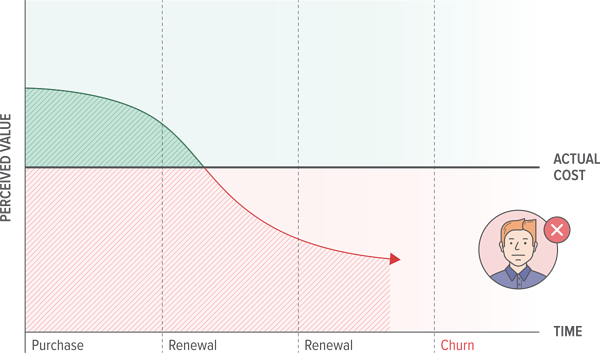The Holy Grail of Subscription Commerce

These days, most entrepreneurs and investors are quite clear about the merits of the subscription model. From a business perspective, recurring revenue is a wonderful concept. When a subscription business is firing on all cylinders, recurring revenue compounds beyond the costs of customer acquisition, and the world is the proprietor’s oyster.
One of the most fascinating elements of subscription commerce is that it requires an understanding of many different disciplines to get right. Irrespective of your offering, which may be a product (of the month), app, service, or some form of media or entertainment—the same principles apply!
Marketers have always adhered to the notion of the ‘4 P’s’: Pricing , Packaging, Positioning, and Placement. In the world of subscription commerce, this is still a requirement, but the value proposition is related less to a single purchase decision and far more to the ‘promise’ of a value proposition which holds up across the TIME continuum. In the world of subscriptions, time is everything. It sits in the center of the most critical business metric every subscription company cares about. It is the ‘T’ in LTV (Lifetime Value).
If your business retains customers as active subscribers for an extraordinarily long period of time, well…congratulations because that increase in ‘time’ works overtime to your advantage for LTV. This affords you tremendous degrees of freedom from a business perspective, because as long as your customers stick around for longer than expected periods of time, you can afford to spend more to acquire them. It also affords you many degrees of freedom to cast a broad net by testing many different customer acquisition channels until you find the right mix of customer acquisition cost (CAC) to lifetime value. This critical CAC-to-LTV ratio has become a universal SaaS startup metric which is the ultimate ‘air / fuel’ mixture for any startup today. Get it right, and success is suddenly within clear sight. Get it wrong, and you’re toast.
Now for the fun part – the ‘subscriber mindset’
Here at Recurly, we are often approached by venture investors, typically seeking the ‘inside track’ by asking, “What kind of patterns or characteristics do you see across your customer base that can serve as predictors of success?” Recurly has visibility into a broad set of customer categories, and we have a rich data set from which to draw. However, as much as we love to benchmark data, the key to predicting success lies in a concept that is softer than SaaS metrics. Benchmark metrics tell us how companies are performing against their like-kind competitors. However, past performance doesn’t always illuminate the magic required to succeed. Ultimately, the answer is the net result of how your service is perceived by your customers: Does the perceived value exceed the actual cost?
Case in point: Netflix
I have personally been a happy subscriber to Netflix for (ahem) 10 years. Yes, back to the ol’ DVD days. Now, with kids in my family, our Netflix consumption is streamed daily. The value is clear, and I don’t ever think twice about my ~$15/month subscription.
Subscription success happens when perceived marginal value exceeds marginal cost for the period. Typically, this is a monthly ‘evaluation.’
Most subscription businesses realize that ‘pre-sale’ marketing and positioning is vastly different than ‘post-sale’ retention marketing, which includes the responsibility of delivering a service which continually exceeds the initial promise.
In fact, most companies hire traditional marketers who are classically trained to ‘pump’ the promise of the value proposition in an effort to increase purchase conversions.
In the world of subscription commerce, purchase conversions are critical, but the brand promise HAS to live up to the customer’s perceived value over time. In fact, this evaluation takes place in perpetuity…which means that the entire Product, Ops, Support, Billing, Product, and Marketing (etc.) teams need to work in concert to keep the perceived value of any subscriber base ‘above the line.’ That is, above the perceived line which is defined by the intersection between perceived value and perceived cost.
Customer's Perceived Value is Greater Than Actual Cost

Customer's Perceived Value is Less Than Actual Cost

Back to my experience as a subscriber of Netflix: my perceived value continually exceeds my actual cost for the service in any given period.
Maintaining a positive subscriber perception, like my experience with Netflix, is not an easy feat. For me, the customer experience with Netflix exceeds the brand promise on a regular, continual basis. But any number of things could de-rail this: bad service, limited content, incorrect billing, etc. However, Netflix continues to meet or exceed their brand promise with an orchestrated delivery across many disciplines, resulting in a great customer experience and millions of loyal subscribers with feelings like my own described here.
In future posts, we will break down the critical need to orchestrate pre-sale marketing and positioning with the many cross-functional disciplines required to over deliver against the original brand promise…over TIME.
~ Dan Burkhart, CEO, Recurly


